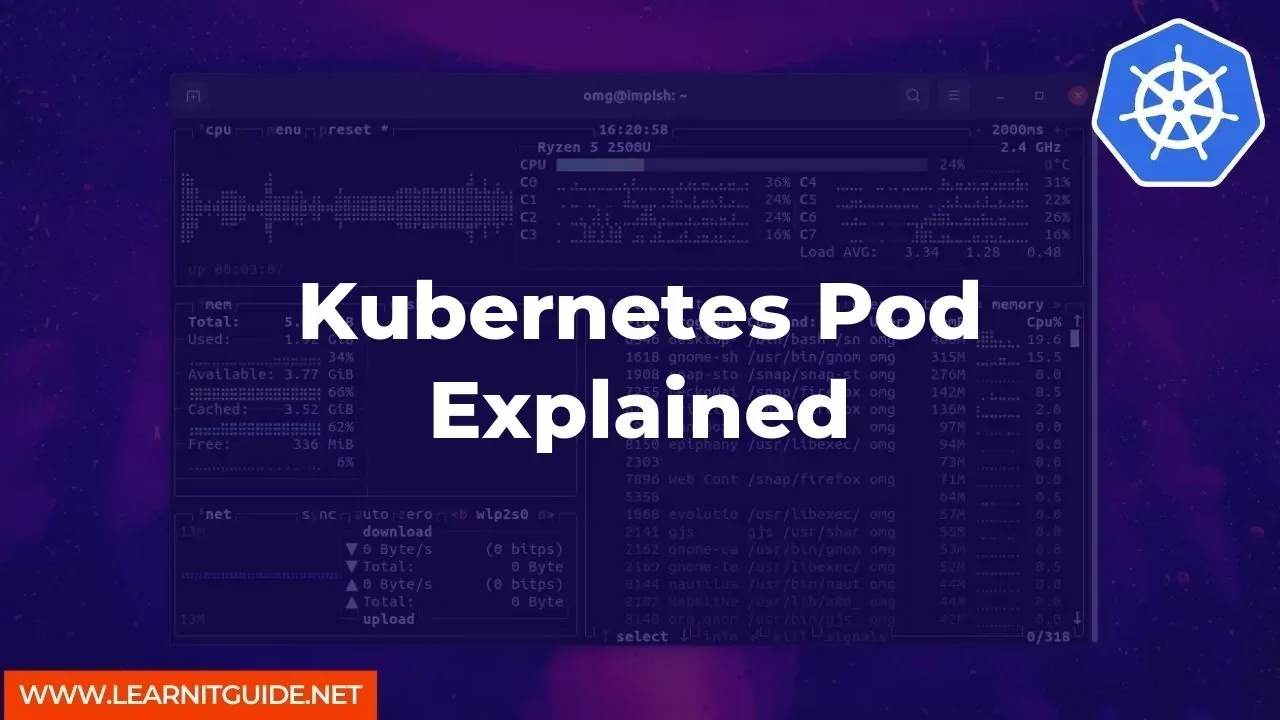Kubernetes is a popular container orchestration platform that helps developers automate the deployment, scaling, and management of containerized applications. One of the key concepts in Kubernetes is the Pod, which is the smallest and simplest unit of deployment in the platform.
In this article, we will explore what a Kubernetes Pod is, how it works, and how you can use it in your containerized applications.
What is a Kubernetes Pod?
A Pod is a logical host for one or more containers. It represents a single instance of a running process in a Kubernetes cluster. A Pod can contain one or more containers, which share the same network namespace, and can access the same volumes. Containers in a Pod can communicate with each other using the localhost interface and can also share the same process ID (PID) namespace.
How does a Kubernetes Pod work?
A Kubernetes Pod is created by a Pod definition file, which specifies the container images to be run, as well as any volumes, environment variables, and other configuration settings. Once the Pod is created, Kubernetes schedules it to run on a node in the cluster. Each node in the cluster runs a Kubernetes agent called the kubelet, which is responsible for managing Pods running on the node.
When a Pod is scheduled to run on a node, the kubelet creates a new network namespace for the Pod, along with a unique IP address. The kubelet then creates the containers specified in the Pod definition file, and configures their network interfaces to use the Pod's network namespace. The containers can then communicate with each other using the localhost interface.
Kubernetes Pods also have a lifecycle. When a Pod is created, it is in the Pending state. The kubelet on the node where the Pod is scheduled to run checks if the necessary resources, such as CPU and memory, are available to run the Pod. If the resources are available, the kubelet moves the Pod to the Running state. If the resources are not available, the kubelet keeps the Pod in the Pending state until the resources become available.
If a Pod fails, Kubernetes will automatically restart it, unless the Pod's restart policy is set to Never. When a Pod is deleted, Kubernetes will also delete any associated containers and volumes.
How to create a Kubernetes Pod
Creating a Kubernetes Pod is a straightforward process. You can use the kubectl command-line tool to create and manage Pods in your Kubernetes cluster. Here are the steps to create a Pod:
- Create a file called pod.yaml with the following contents:
apiVersion: v1
kind: Pod
metadata:
name: my-pod
spec:
containers:
- name: my-container
image: nginx
This Pod definition file specifies that the Pod should contain a single container based on the nginx image.
- Run the following command to create the Pod:
kubectl apply -f pod.yaml
This command creates the Pod based on the definition file.
- Run the following command to view the status of the Pod:
kubectl get pods
This command shows you the status of the Pod. The status should be Running once the Pod is up and running.
So, Kubernetes Pods are a key concept in the Kubernetes platform. They are the smallest and simplest unit of deployment and represent a single instance of a running process in a Kubernetes cluster. Pods can contain one or more containers and share the same network namespace and volumes. Creating and managing Pods in Kubernetes is a straightforward process using the kubectl command-line tool.
Related Searches and Questions asked:
That's it for this post. Keep practicing and have fun. Leave your comments if any.








0 Comments